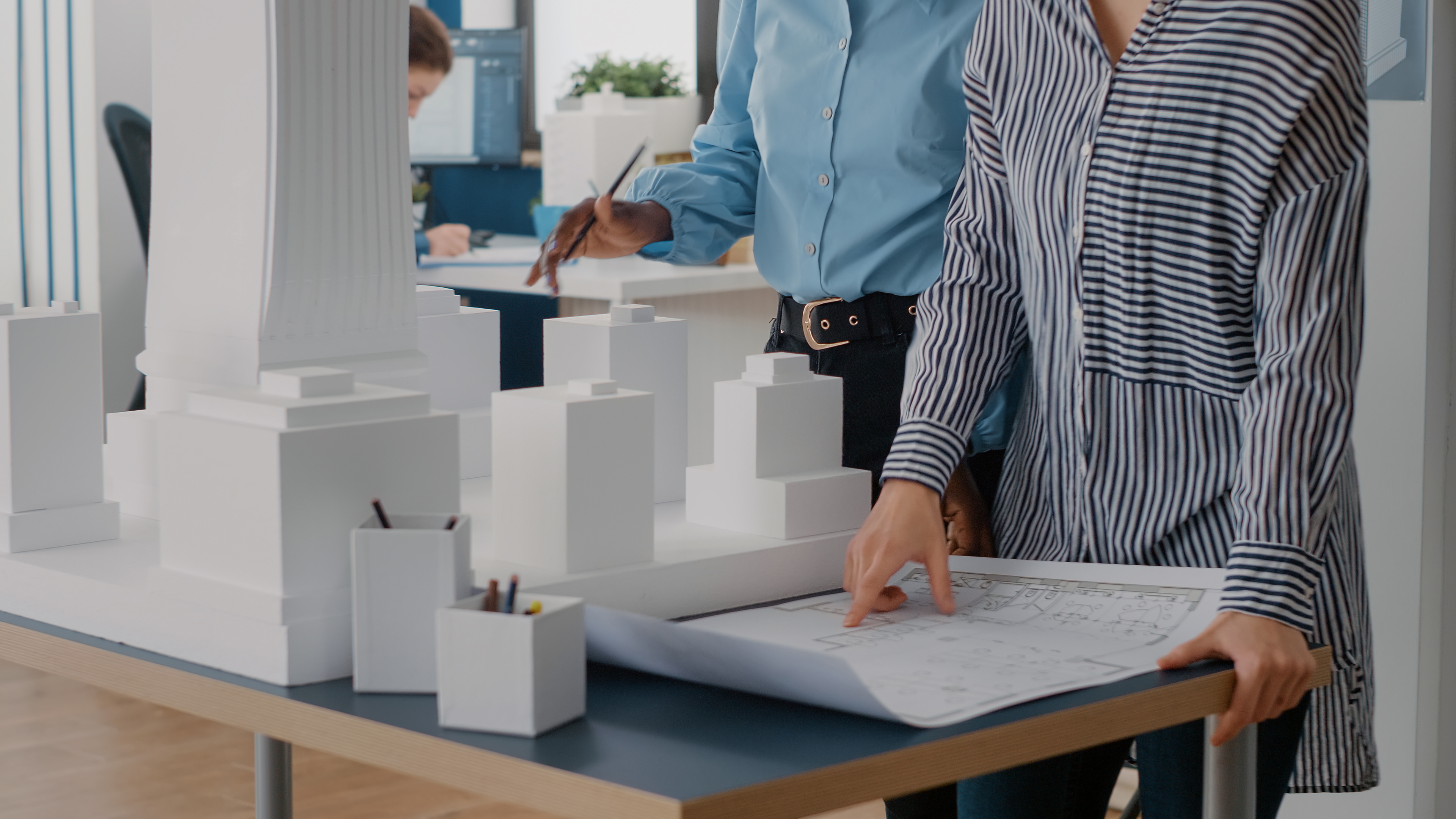Climate change poses unprecedented challenges to the built environment, urging a paradigm shift in construction practices. The increasing frequency and severity of extreme weather events, rising sea levels, and shifting climatic patterns necessitate the adoption of sustainable construction methods. This article explores the crucial role of sustainable practices in mitigating the impact of climate change on the construction industry and the environment.

Close up of diverse team of women working on blueprints design in office. Multi ethnic architects using industrial print on table to plan construction layout for architecture project.
The choice of construction materials significantly influences a building’s environmental footprint. Sustainable alternatives, such as recycled steel, bamboo, and reclaimed wood, reduce the demand for virgin resources and minimize environmental degradation. Additionally, the use of low-carbon concrete and eco-friendly insulation materials contributes to a more sustainable construction process.
Sustainable construction emphasizes energy efficiency from the design phase. Incorporating passive design principles, such as maximizing natural light, proper insulation, and strategic placement of windows, reduces the need for artificial heating and cooling. Furthermore, the integration of renewable energy sources, such as solar panels and wind turbines, enhances a building’s resilience to power disruptions and reduces its carbon footprint.
Sustainable construction practices extend to water conservation. Implementing rainwater harvesting systems, permeable pavements, and efficient irrigation techniques minimizes water usage and helps manage stormwater runoff. These strategies not only contribute to environmental sustainability but also enhance a building’s resilience in water-scarce or flood-prone regions.
Climate-resilient infrastructure involves designing structures capable of withstanding extreme weather events. Elevated buildings in flood-prone areas, wind-resistant designs, and seismic-resistant structures exemplify resilient construction. Engineers are integrating climate data into their designs to ensure that buildings can adapt to the changing climate and withstand the challenges posed by severe weather conditions.
Embracing the principles of the circular economy, sustainable construction encourages adaptive reuse of existing structures. Retrofitting and repurposing buildings reduce waste and embodied carbon associated with new construction. This approach not only conserves resources but also preserves the cultural and historical significance of structures.
The integration of smart technologies in construction enhances sustainability and resilience. Smart building systems that optimize energy usage, monitor environmental conditions, and enable predictive maintenance contribute to resource efficiency and reduced environmental impact. Internet of Things (IoT) devices and sensors play a pivotal role in creating intelligent, adaptive structures.
Regenerative design goes beyond sustainability by seeking to restore and rejuvenate ecosystems. Construction practices that mimic natural processes, such as biomimicry, promote regenerative design. This approach involves creating buildings that actively contribute to the health of the surrounding environment, whether through green roofs, urban agriculture, or biodiversity-enhancing landscaping.
Sustainable construction should be community-centric, considering the social, economic, and environmental well-being of local populations. Engaging communities in the construction process, incorporating local materials and labor, and ensuring affordability contribute to the overall sustainability of a project. Additionally, community-based resilience planning fosters a sense of ownership and preparedness for climate-related challenges.
Conducting a comprehensive lifecycle assessment is integral to sustainable constructions. Evaluating the environmental impact of a building from raw material extraction to demolition allows for informed decision-making. This holistic approach considers the embodied carbon, energy consumption, and potential for recycling or repurposing at every stage of a building’s life.
Government policies play a crucial role in promoting sustainable construction. Incentives for green building practices, stringent environmental regulations, and certification programs such as LEED (Leadership in Energy and Environmental Design) encourage the adoption of sustainable construction methods. Governments worldwide are increasingly recognizing the importance of regulating the constructions industry to align with climate goals.
In conclusion, adapting to climate change through sustainable constructions practices is not just a necessity but a fundamental responsibility. The construction industry’s choices today profoundly impact the resilience of our built environment in the face of a changing climate. By embracing innovative materials, designs, and community-centric approaches, we can build a sustainable future where construction harmonizes with the natural world rather than depleting its resources.
StayD Construction @. All rights reserved